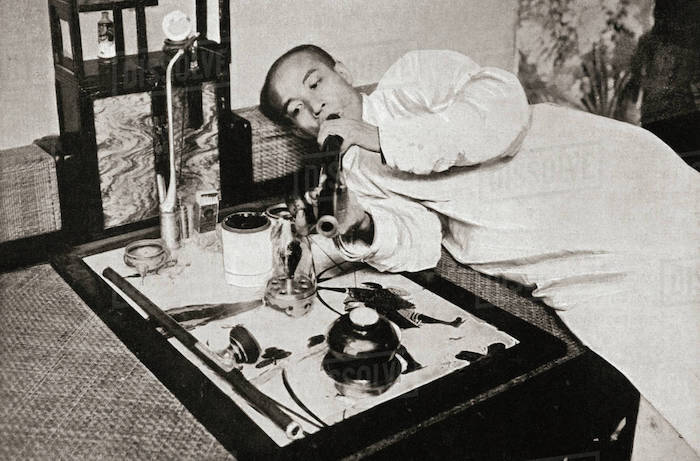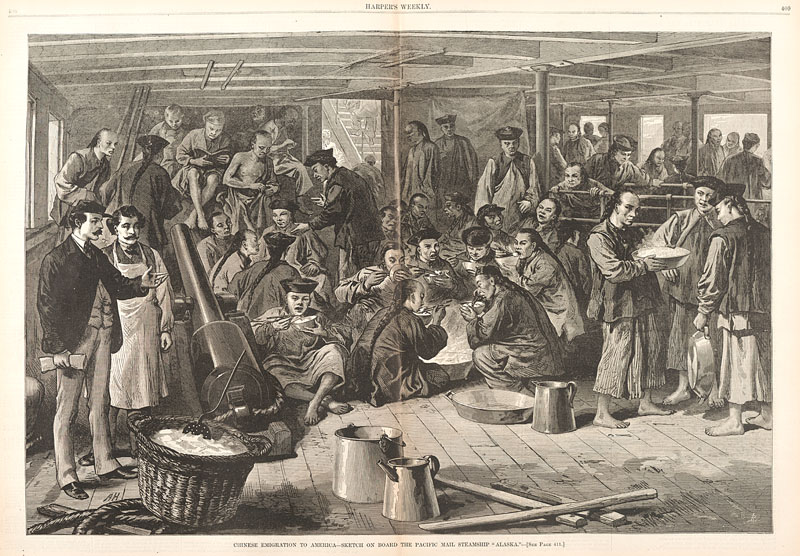Mahathir is ignorant about the history of the Chinese and Indian migration

So, there you are. That was why the Indians and Chinese came to Malaya to work as labourers from 1850 to 1920. And that was why the British and Chinese labour ‘contractors’ did not seek out Malays to work in the plantations and tin mines. Why look for Malays when you have slaves to do the work for opium and toddy (which incidentally the British controlled)?
NO HOLDS BARRED
Raja Petra Kamarudin

These people have no choice but to do the dirty and low-paid jobs that the Malays, Chinese and Indians would not touch
Tun Dr Mahathir Mohamad posted an article in his blog saying that the Malays are lazy and refuse to work, and that is why Malaysia needs to import seven million foreign workers.
But the Malays or Bumiputeras are only 60% of the country’s population. What about the Chinese and Indians? Why don’t they do the work instead so that Malaysia does not need to bring in seven million foreigners? After all, the British brought in the Chinese and Indians to become labourers.
Does Mahathir even know the history of the Chinese and Indian migration from 1850 to 1920 and why the British brought them into Malaya?

The Chinese were prepared to work for opium, the Malays were not
In 1834, the British introduced the cultivation of cocoa into Ceylon, alongside rubber and coconut. Tea was another product the British introduced, not only into Ceylon but to other parts of India as well.
After some years, Ceylon’s cocoa plantations were hit by a blight and this wiped out the cocoa industry. Once the blight hits your plantation the land is useless and cannot be used to plant cocoa any more.
The British had to look for an alternative place far away from Ceylon to grow cocoa and they decided on Malaya, considering that Malaya and Ceylon were similar in weather and other conditions.
So, the British cocoa plantations were relocated to Malaya. But then the Malays were not labourers or plantation workers by nature and they knew nothing about cocoa. Hence the British decided not only to relocate their plantations to Malaya but to relocate the more experienced Ceylonese-Indian labourers as well.

Not only the Malays but the Chinese and Indians also refuse to work as plantation workers today
That was why there was a surge in the migration of workers from India-Ceylon from the mid-1800s to around 1920 when British Malaya ended the migration policy.
The biggest producer of cocoa was Brazil, who at that time controlled 70% of the world market. Because of the over-production of cocoa in Brazil, the price of cocoa collapsed, so it was no longer viable to continue to grow cocoa.
The British had to look for a new crop to grow and in 1877 they introduced rubber to replace cocoa, which also, just like cocoa, came from Brazil. By 1930, Malaya produced half of the world’s rubber (but by 1920 the importation of Indian-Ceylonese workers had ended).
The Chinese story is different.
In 1810, 1811, 1846 and 1849, China experienced famine that saw 45 million deaths. From 1850 to 1873, the Taiping Rebellion and drought killed another 20-30 million Chinese. In 1875, a drought/famine began in northern China that killed between 9 to 13 million people.

It was either migrate or die in China
This high death toll of almost 100 million people resulted in many Chinese wanting to leave China and seek a new life elsewhere, the United States being the favourite destination then.
It was not cheap for the Chinese to travel outside China plus they had to bribe the Chinese officials to be allowed to leave China (yes, even Chinese officials can be corrupt). But these were penniless Chinese who had nothing but the clothes on their backs.
This was where the triads came in. The triads would arrange and pay for their passage (including the bribes) but these Chinese had to sign a “labour contract” and work until they paid off their debt. In short, these Chinese sold themselves into debt slavery.

These Malays work very hard and are not lazy, as Mahathir suggests
To add insult to injury, these contract labourers or slaves had to become triad members and subject themselves to triad laws, which most times means death. On top of that, they were not paid in cash but were given lodging, food and opium as their salary. That meant they were literally slaves for life. But then most died young from disease and triad wars so they never reached pension age anyway (in Ampang, Selangor, entire Chinese communities got wiped out by disease and wars).
So, there you are. That was why the Indians and Chinese came to Malaya to work as labourers from 1850 to 1920. And that was why the British and Chinese labour ‘contractors’ did not seek out Malays to work in the plantations and tin mines. Why look for Malays when you have slaves to do the work for opium and toddy (which incidentally the British controlled)?
The bottom line is, the Malays would not want to contract themselves as slaves or agree to get paid in toddy, samsu, or chandu-opium like the Chinese and Indians in the 1800s and early 1900s. So, it is not that the Malays are lazy, as Mahathir says. Anyway, if the Malays did not plant rice or catch fish, the Chinese and Indian-Ceylonese workers would have starved to death like they did back in China and India.

